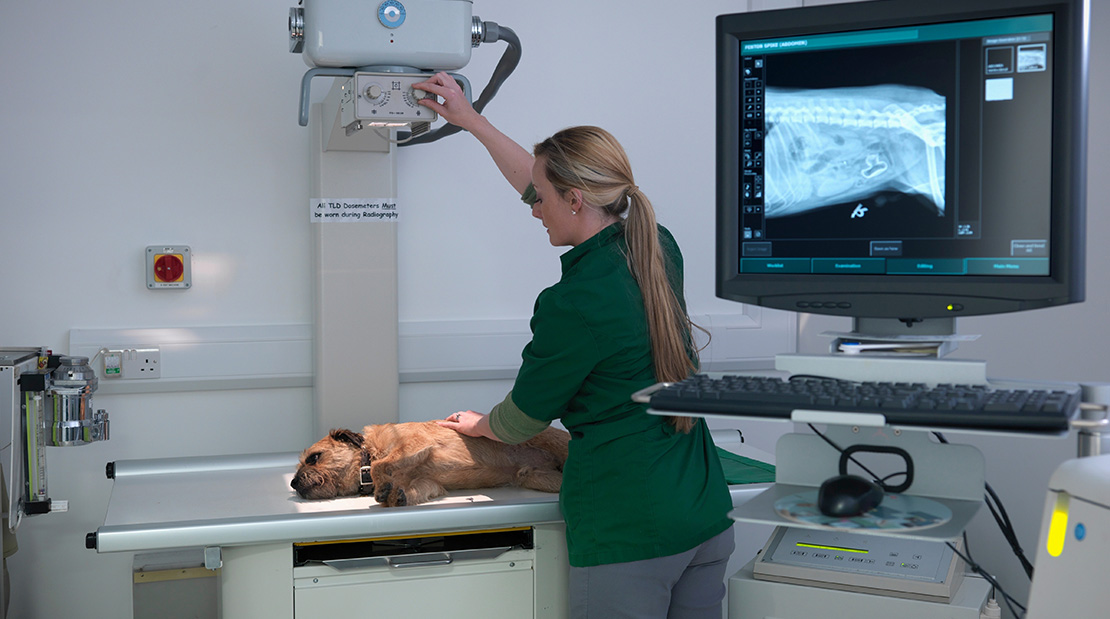
The Power of Radiographs in Veterinary Medicine
Radiographs, commonly known as X-rays, are among the most important diagnostic tools in veterinary medicine. Whether dealing with a routine check-up or a more complex case, X-rays provide invaluable insight into an animal’s health. At Cy-Fair Animal Hospital, we use digital radiographs to assess our patients quickly and efficiently, making this technology an essential part of our daily practice.
The Role of Radiographs in Veterinary Care
X-rays allow veterinarians to see an animal’s body clearly without invasive procedures. Traditionally, X-rays were used to examine bones, but technological advances have expanded their usefulness. Today, we can use X-rays to assess soft tissue structures like organs and even detect masses or foreign objects. This makes radiographs versatile and essential in diagnosing various conditions, from broken bones to respiratory issues.
We also use digital X-rays, which offer several advantages over older film-based systems. The images are available almost instantly, allowing us to make faster decisions about treatment. Digital X-rays also reduce the amount of radiation exposure, making them safer for both the patient and our staff. We still follow safety protocols, such as wearing protective gowns, to ensure the safety of everyone involved.
X-rays vs. CT Scans: A Complementary Approach
While X-rays are beneficial, there are times when we need even more detail. In these cases, CT scans prove more valuable. X-rays give us a two-dimensional (2D) view of a three-dimensional (3D) object, which means they are best suited for getting an overview of the situation.
However, CT scans offer a 3D view and allow us to see cross-sections of an animal’s body, providing a level of detail that X-rays can’t match. This makes CT scans particularly useful for diagnosing complex conditions like certain cancers, soft tissue injuries, or spinal issues. Both tools complement each other; X-rays are often used to pinpoint the general area of concern, followed by a CT scan for a more detailed look. Our CT Scanner is even available for other veterinary practices, making it a valuable tool in our community.
Other Diagnostic Tools: Ultrasound
Another diagnostic tool we use l is ultrasound. Ultrasound uses sound waves to create images of the inside of the body. Unlike X-rays, ultrasound is great for real-time imaging and is especially useful for examining organs, detecting pregnancies, or identifying fluid buildups. While CT scans, ultrasounds, and X-rays are all valuable, they serve different purposes and are often used together for a comprehensive diagnosis.
Radiograph Safety at Cy-Fair
Safety is always a priority when using any form of diagnostic imaging. With digital radiographs, radiation exposure is minimal. We take all necessary precautions, such as wearing lead aprons and limiting the number of X-rays taken to avoid overexposure. However, modern digital X-rays emit such low radiation levels that they are safe for animals and veterinary staff.
Consult Your Vet for Radiography Needs
Radiographs are essential to veterinary care, offering a fast and effective way to diagnose many conditions. Whether it’s a routine check-up or an emergency, radiographs provide critical information that helps guide treatment. If you have concerns about your pet’s health, consult your veterinarian. Cy-Fair Animal Hospital uses the latest diagnostic technology, including X-rays, to ensure your pet receives the best care possible.

